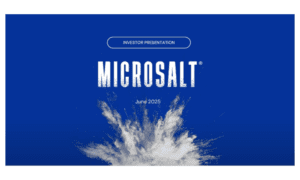Looking to limit your sodium intake? These five simple tips can help.
Key takeaways:
- Five ways to lower dietary sodium:
- Eat plenty of fresh fruits and vegetables
- Avoid processed and fried foods
- Season with herbs and spices instead of salt
- Read food labels
- Buy low-salt snacks
Following a good diet is one of the most important things you can do for your health. This means being deliberate with everything you eat and drink, creating a diet plan, and avoiding unhealthy ingredients.
Managing sodium intake is an important component of any healthy eating plan. We all need some dietary sodium to help our bodies perform necessary functions, but most consumers eat a lot more than necessary, especially if their diet consists mainly of prepared, packaged, and/or processed foods.
According to the FDA, Americans eat an average of 3,400 mg of sodium per day, far more than the recommended 2,300mg per day. That’s not a good thing, as excessive sodium intake has been linked to fluid retention, stroke, heart attack, and hypertension.
The takeaway? Most of us need to rein in our sodium consumption to avoid future health problems. And cutting back on sodium is even more important if you already suffer from a condition like heart disease or high blood pressure.
If you’re one of the millions of Americans who need to slash your salt intake, here are five simple strategies to effectively manage your dietary sodium.
1. Eat plenty of fresh fruits and vegetables
You already know how important fruits and vegetables are for a healthy, well-rounded diet. But eating more of these naturally low-sodium foods is also an easy way to lower your sodium intake. Try to eat as much fresh, raw produce as possible, and if you do cook your vegetables, don’t add any salt. Avoid canned vegetables, which typically rely on added salt as a preservative.
The benefits of this dietary approach to sodium reduction have led to one of the most popular treatments for high blood pressure: the DASH diet, which means Dietary Approaches to Stop Hypertension. The DASH diet centers around eating four to five fruit servings, four to five vegetable servings, and two to three low-fat dairy servings per day.
2. Avoid processed and fried foods
According to the American Heart Association, over 70% of our sodium intake comes from processed and restaurant foods, so these are obvious sources to target when you’re trying to cut back. Processed foods are usually loaded with sodium, which is added as a seasoning and a preservative to increase shelf-life. Fast food also has notoriously high levels of salt, although restaurants such as Olive Garden and TGI Fridays can be just as bad.
To avoid all that extra sodium, eat at home whenever you can. Buy fresh produce and meat products instead of processed alternatives. And control the amount of salt you’re putting in your food by planning and preparing healthy meals in advance.
When you do eat out, try to order healthy options like fresh vegetable dishes. You can also ask that kitchen staff not add any salt to your food as it’s being prepared.
3. Season with herbs and spices instead of salt
Contrary to popular belief, you have a lot of options for seasoning your food without salt. Get creative with what you use at home to give your meals a no-sodium burst of flavor. Flavor-enriching examples include:
- Herbs like oregano, basil, rosemary, thyme, parsley, mint, sage, dill, and cilantro
- Spices like paprika, cumin, ginger, turmeric, star anise, cinnamon, nutmeg, and black pepper
- Garlic
- Onions
- Lemon and lime
These ingredients can help you spice up a dish without adding salt. And as an added bonus, you’ll discover a whole new world of delicious flavors that you’ve never experienced before.
4. Read food labels
Start paying more attention to food labels. You may be surprised that a food or beverage you love contains a lot of added salt. For example, a can of Diet Coke, which has zero calories, has 40 mg of sodium; one slice of cheddar cheese can have 111 mg of sodium; and a can of green beans has around 340 mg of sodium.
This is why it’s important to always read the nutrition facts on the products you buy. Once you see exactly how much sodium is lurking in some of those canned and boxed favorites, you’ll go running for the fresh produce. Knowledge is power when you’re changing your diet for the better.
5. Buy low-salt snacks
Common snack foods like chips, crackers, pretzels, nuts, and seeds tend to have a lot of added salt for flavor. However, you can now find low- or no-added-salt versions of all of these tasty items, so you can still enjoy what you like while avoiding excessive amounts of sodium. Also consider switching up your snack routine with healthy options such as baby carrots, apples, bananas, dates, unsalted popcorn, or dried fruits.
How MicroSalt® gives you flavor without the sodium
Cutting your dietary sodium intake down to healthy levels can help you avoid or manage high blood pressure, heart issues, kidney disease, and other chronic diseases. But many people don’t know how much salt they’re taking in each day, and most Americans get a lot more than they need.
Fortunately, many of today’s snack-food brands offer full-flavor products with a lot less sodium like MicroSalt®’s SaltMe®! Chips. We offer a revolutionary, patented ingredient that provides that great salt taste with only half the sodium. It’s all-natural salt, but in smaller particles that dissolve right away when you put them on your tongue, so you get a more intense salt taste in every bite. In fact, MicroSalt®’s crystals are twice as salty as regular salt crystals, so you can cut your salt intake in half and still get all the flavor you love!
Contact MicroSalt® today to learn more about our unique snack products.




